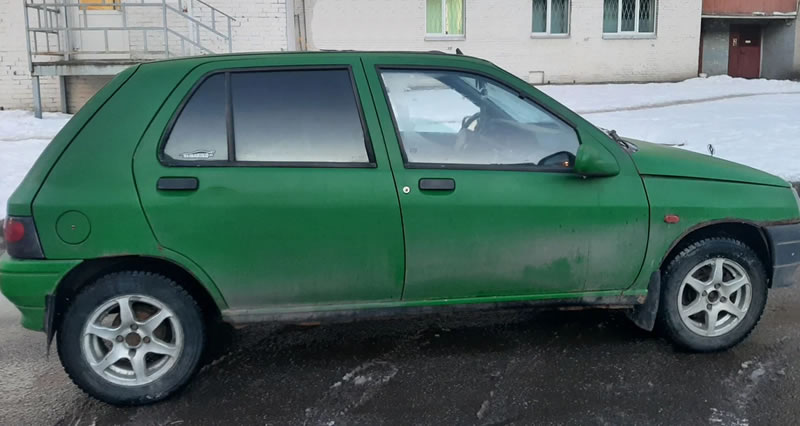Keeping Your Classic Alive: A Chat About Fixing the Renault Clio Mk1 (1990-1998)

So, you've got a first-generation Renault Clio, the one with the cute, rounded headlights and that surprisingly peppy character? Brilliant choice. These little French hatchbacks are full of charm, but let's be honest, they're not getting any younger. Owning a car that's between 25 and 30 years old is a relationship; it requires a bit of understanding and a willingness to get your hands dirty. Don't worry, though. Many of its common grumbles are well-known and, with a bit of guidance, totally fixable. Let's have a chat about what to listen for and how to keep your '90s icon on the road.

The Usual Suspects: What Goes Wrong and How to Spot It
These cars were built in an era of transition, with simple mechanics starting to share space with early electronics. That gives us a pretty clear list of "frequent offenders."
1. The Electrical Gremlins: It's (Almost) Always the Earth Points.
If your Clio starts behaving like a haunted house – flickering lights, a dim dashboard, a stereo that cuts out, or worst of all, a car that just won't start – don't panic and start replacing expensive parts. The first and most important place to look is the earth points.
- The Symptoms: Crazy dashboard light patterns, slow-cranking starter, intermittent electrical failures.
- The Fix: Find the main earth straps. One crucial one goes from the battery's negative terminal to the chassis. Another important one is from the gearbox to the chassis. Unbolt them, grab some sandpaper or a wire brush, and scrub the contact points on both the cable lug and the car's body until they shine. Rebolt them tightly. This simple, $0 fix solves about 70% of all weird electrical issues on these cars.
2. The Engine Won't Start: A Logical Approach
A non-starting Clio can be frustrating, but it's usually one of a few things. Let's break it down.
- It cranks but won't fire:
- Check for a Spark: Pull a spark plug lead, insert an old spark plug, and rest it on a metal part of the engine. Have a helper crank the engine. No bright blue spark? The culprit is likely the Ignition Module (mounted on the bulkhead/wheel arch) or the Crank Angle Sensor. Both are common failure points.
- Check for Fuel: Listen for the faint whirr of the fuel pump when you turn the key to the 'on' position. No sound? Check its fuse and relay first. If those are good, the pump itself might have given up the ghost. They are a known wear item on these older models.
- It doesn't crank at all (just a "click"):
- That's usually the starter motor. Tapping it gently with a hammer while a helper turns the key can sometimes free a stuck brush, getting you one more start, but it will need replacing.
3. The "She's Getting Old" Aches and Pains
These are the issues related to age and wear that you should just expect.
- Oil Leaks: The rocker cover gasket is almost guaranteed to seep oil eventually. It's a cheap and easy fix. A more significant, but still manageable, leak can come from the camshaft oil seal.
- Rust: It's the great killer of classics. Be vigilant. Check the sills (rocker panels), the wheel arches, the bottom of the doors, and the floorpan. Catching it early is the difference between a simple weld and a major restoration.
- Suspension Knocks and Clunks: After decades of potholes, the suspension bushings wear out. A clunking sound over bumps often points to worn anti-roll bar links or wishbone bushes. These aren't complex to replace and will transform the car's handling and feel.
Your Best Friends: The Haynes Manual and the Online Community
You are not alone in this. Two resources are absolutely invaluable:
- The Haynes Manual: Find a copy for the "Renault Clio 1990-1998". It's worth its weight in gold. It has step-by-step guides, torque specs, and clear diagrams for almost every job you can imagine.
- Online Forums and Groups: Search for "Renault Clio Mk1 owners group" on Facebook or dedicated car forums. These communities are filled with enthusiasts who have seen every problem a Clio can throw at you. You can post a photo of a mysterious part and have it identified in minutes. It's a fantastic source of advice, encouragement, and sometimes even spare parts.
Final Thought: Patience is a Virtue
Fixing a classic Clio isn't about having a huge garage or every tool known to man. It's about patience, logic, and a willingness to learn. Start with the simple, free checks (cleaning those earth points!) before you assume the worst. These cars are mechanically straightforward and were designed to be worked on. Every problem you diagnose and fix yourself will make you love that little French hatchback just a little bit more.














